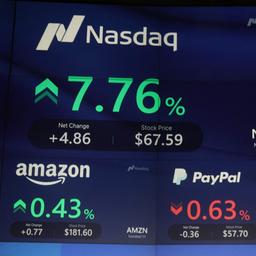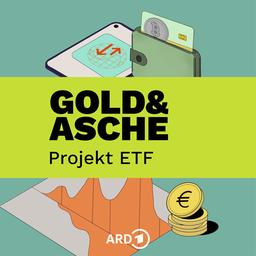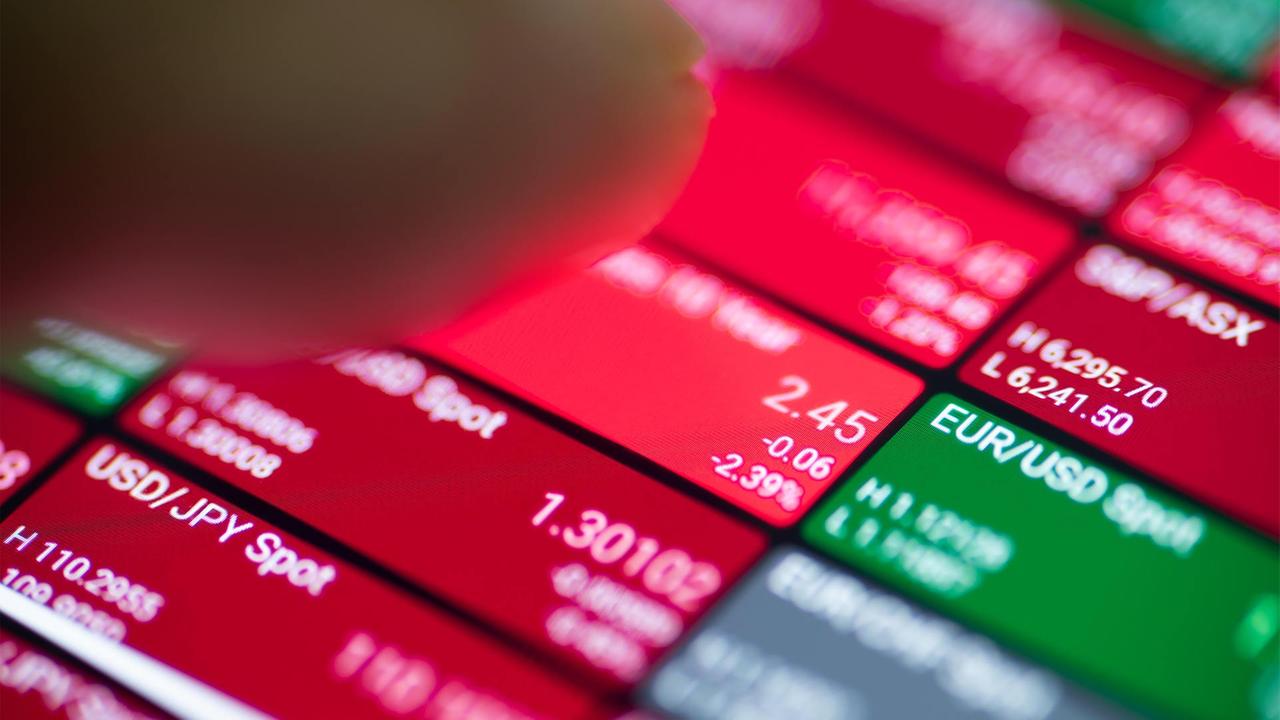Low costs and easy trading: There are many advantages to ETFs. But for most private investors, security is the main concern when it comes to retirement planning. So what are the risks?
According to a survey by the Association of German Banks, two thirds of Germans place one priority on investing: security. The majority of Germans are therefore still critical of stocks as a means of saving for retirement. This is probably mainly due to the bursting of the dotcom bubble in the early 2000s. A few years later, the financial crisis also came along.
“Anyone who has been hit twice may simply have had enough and would rather make safe investments,” says Karin Baur from the consumer magazine Finanztest in ARD podcast “Gold & Ashes: Project ETF”Investing in exchange-traded funds (ETFs) also involves risks. What are they and how can they be reduced?

What are ETFs?
ETFs (Exchange Traded Funds) are exchange-traded funds or index funds that reflect the performance of an index such as the DAX or the Dow Jones. If the DAX rises by one percent, the ETF on the DAX would also rise by one percent. A DAX ETF usually contains all 40 companies from the index – such as VW, SAP or Siemens.
ETFs make it possible to invest in a wide range of stocks or other securities at any time – even with small amounts. Investors can buy shares using a savings plan, for example.
Corporate and market risk as the greatest danger
When assessing the risk of financial products, it always depends on what is being compared. Of course, a bank account is safer than a savings plan in a stock ETF, but you don't get much out of it. On the contrary: if the money is simply lying around in a checking account, it loses value every year due to inflation. Hendrik Buhrs, an investment expert at Finanztip, names two major types of risk when it comes to ETFs: corporate risk and market risk.
“Corporate risk means that the company I invest in does not develop as well as hoped. This leads to the share price falling and that if I have to sell at that moment, I will make a loss,” explains the expert. This can be offset by not just concentrating on one or a few companies, but on as many as possible. “That is the secret to choosing a good ETF: choosing an ETF that contains as many different companies as possible,” says Buhrs.
There is also the market risk, because the entire stock market also fluctuates fundamentally. If many investors sell shares because a large number of companies are in trouble, the markets can collapse within a few days – as happened at the beginning of the corona pandemic. Even with a broad diversification, large losses must then be expected. One way to minimize this risk is a long investment horizon, says Buhrs: “Experience shows that fluctuations in the stock market balance out again after many years.” A rough guideline for a global basket of shares is 15 years.

Podcast “Gold & Ashes: Project ETF”
In the second season of “Gold & Ashes” the ARD Finance Department In six episodes, the most important things about investing in ETFs are examined step by step – with background information and expert knowledge. You can hear it in the ARD audio library and everywhere podcasts are available. You can find the individual episodes here.
Episode 1: Why ETFs? (14 August)
Episode 2: Which ETFs are there? (21 August)
Episode 3: Engine Room ETF (28 August)
Episode 4: Risks and criticism of ETFs (September 4)
Episode 5: How do I find the right depot (September 11)
Episode 6: How do I build my ETF portfolio? (September 18)
Long investment horizon crucial
Christoph Hommel from the NRW consumer advice center has a simple tip: “I always say, print out the MSCI World chart, hang it next to your bed, and if you wake up in the night drenched in sweat because the shares are in the red, then take a quick look at the chart and see, OK, it has always gone up again.” And there is even an advantage in bad times: savers can buy more at a low price.
A savings plan could be a form of psychological protection. This makes it easier to remain calm even in times of crisis and to continue investing in the stock market. Because once set up, it runs automatically on autopilot and a certain amount is bought every month – without having to think about whether a good opportunity is currently present. Apart from that, however, an individual investment in ETFs is often better because you are invested in the market with a larger sum over a longer period of time. What works best for the individual private investor is a very individual question.
In addition, many consumers are afraid that the stock market will crash when they reach retirement age and actually want to sell their ETFs. It is impossible to predict exactly how a stock investment will develop. So if you need a certain amount by a specific date, you should be cautious on the stock market. However, if the goal is an additional private pension, you can open a portfolio even in your mid-60s. Even then, there is still plenty of time to achieve a good return.
Concentration risk with ETFs that are too narrow
Another type of risk with ETFs is concentration risk. This can be linked to the criticism that is often levelled at the MSCI World index. It is often said that it is not very well diversified – i.e. broadly spread – because more than 70 percent of the shares are now held by US companies. The ten largest individual positions alone come from the USA. There is also a focus on high-tech companies. The reason: the MSCI World is weighted according to market capitalization. This means that the largest companies also have the greatest weight – currently US companies from the technology sector.
But it doesn't have to stay that way, stresses expert Buhrs. It could be that China, for example, will be included in the MSCI World in a few decades and will set the tone. “We don't know all of that today. But what we do know for sure is that an MSCI World will follow these trends due to its fairly open logic and construction.” In addition, the US companies at the top – i.e. Nvidia, Microsoft, Apple, Amazon, the Facebook group Meta or Google's parent company Alphabet – generate their revenues all over the world anyway and not just in the USA.
In addition, many alternatives have a greater concentration risk, as consumer advisor Hommel reports: “I once read that 80 percent of Germans invest exclusively in German stocks.” The concentration risk is also much more relevant for thematic ETFs. These are ETFs on an index that only contains companies from a certain industry, a region, or only companies that deal with topics such as electromobility, solar power or robotics. Investors should only have these as an addition to their portfolio, if at all, even if they can sometimes bring high returns. Otherwise, there is a risk of total loss.
Different ETF constructions are different risky
The replication method, i.e. how an ETF is constructed, also plays a role in the risk – especially with synthetically constructed ETFs. The stock market index is artificially replicated through exchange transactions between the ETF provider and other financial institutions. This means that shares are exchanged with other shares in order to achieve exactly the same performance as the index. These ETFs are sometimes cheaper, but they also involve an additional financial institution – usually investment banks or hedge funds. This results in what is known as counterparty risk.
If the exchange partner who provides the shares with the right performance suddenly has payment difficulties, the losses compared to the index may not be able to be absorbed. To prevent this, ETFs are protected by the European regulations for the regulation of investment funds (UCITS). The value of the so-called swaps may not exceed ten percent of the fund assets, and the deviation in performance may also only be ten percent. This must be checked daily. ETF providers also take certain precautions by demanding additional collateral from their partners.
“I don't see any danger with synthetic ETFs because there are enough security measures in place to guarantee investors the equivalent value,” says Finanztip expert Buhrs. In addition, trustworthy contractual partners such as major international banks are always involved. “So I wouldn't worry about synthetic ETFs.” In addition, investors always have the option of buying an ETF in a physically replicated version, in which the shares are actually included.
There are two additional risks associated with bond ETFs
Finally, the currency risk of ETFs is also worth a look. The currency in which the fund is issued says nothing about the currency risk in large stock indices. This is because all of the companies included in the index have many different currency risks themselves because they generate their sales in numerous countries with different currencies. So if you spread your money in your portfolio as widely as possible across different currencies, you don't have to worry too much about currency risks in the long term: In the long term, the fluctuations even out.
The situation is different with bond ETFs, where it can make sense to hedge the currency risk. Their potential returns are significantly lower than those of equity ETFs. There are special ETFs that are currency-hedged.
There is another risk with bond ETFs: interest rate risk. Investors receive interest for a set term. If a bond is worth 100 euros when it is issued and has an annual interest rate of three percent, there is an annual return of three euros. However, this calculation assumes that everyone holds the bond until maturity. But that is not the case. When interest rates rise, the price usually falls because investors sell their bonds to buy new securities with higher interest rates. If many do this, the price of the bond falls and you make a loss if you sell before the end of the term.





